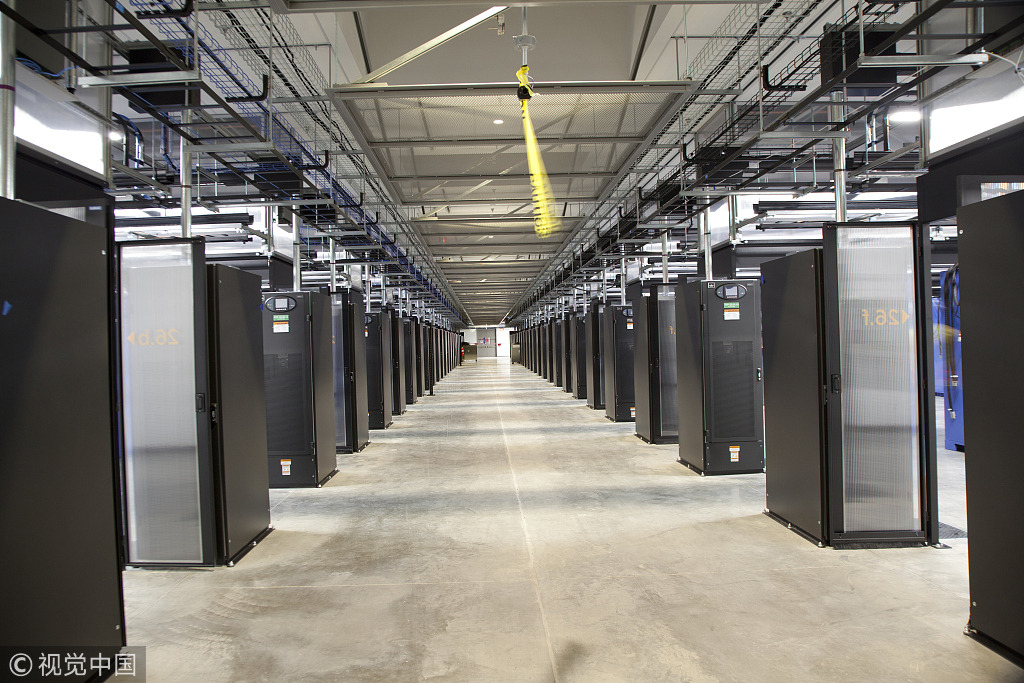
Environment
18:47, 12-Mar-2019
The hidden costs of our hunger for data
Updated
19:42, 12-Mar-2019
Henry Zheng

Think
of the endless stream of files on your phone – your selfies and
puppy clips. Where do they reside? For many, they
live on the "cloud," an abstract concept that, in reality,
has significant consequences, especially for the environment.
The
cloud is a marketing term that reminds us that the world is made more
convenient by going digital, for it evokes something that is
adaptable, almost formless. In our global quest to turn everything
into bits and bytes, many believe that we are producing less physical
waste, thus helping the environment. The hidden costs of our thirst
for data, however, is contributing to climate change.
The concept of cloud computing is powered by very concrete servers and related hardware. Most of the data on our smartphones and other computing devices are increasingly finding refuge in server "farms," which requires tremendous amounts of electricity to operate. These and other data centers also process and move around our digital activity, all of which are energy-intensive tasks.

A Facebook server farm in the U.S. state of Oregon. /VCG Photo
A Facebook server farm in the U.S. state of Oregon. /VCG Photo
Such data centers are estimated to use two percent of the world's electricity. Much of that energy is generated from nonrenewable sources such as coal, which are responsible for the carbon dioxide emissions that contribute to global warming. The wider information and communication technologies (ICT) industry could account for 3.5 percent of global emissions by 2020. That amount may increase as our data consumption is projected to double every four years.
Along with electricity, cooling these centers to mitigate the heat generated by the servers also hog energy. For some of these buildings, cooling accounts for nearly as much energy usage as the operation of computing equipment.
In data-hungry China, e-commerce giant Alibaba tried to tackle the problem of cooling by having one of its data centers draw water from Qiandao Lake in Hangzhou. The water flows through a long canal into the facility that houses the servers, then is cycled back into a nearby water body that eventually flows back to the lake.
An industrial problem
Energy consumption from the ICT industry has increased by nine percent each year, states a report released this month by the Shift Project, a French environmental think tank. Greenhouse gas emissions from the industry, meanwhile, make up 3.7 percent of the global total.
ICT is expected to continue growing, as the proliferation of AI and the Internet of Things (IoT) will only generate more data.
The report states that video streaming is an important driver of this data explosion. It also lays the blame for exorbitant energy usage on developed countries, noting that last year, each American owned an average of 10 digitally connected devices using 140 gigabytes of data per month, compared with India's one device per person at two gigabytes.
Greening the supply chain
Housing data aside, manufacturing these devices consumes significant amounts of energy as well. In response, tech giants such as Apple have stepped up their game in going green. In 2015, the company announced that having its operations run on clean energy until 2020 will be equivalent to taking four million passenger vehicles off the road. It also claims electricity generated by its solar installations means that its operations in China are completely carbon neutral.
The company's green efforts are substantial, since many of its products such as iPhones and iPads are assembled by Foxconn in factories throughout China. On the other hand, critics say that Apple's claims of using 100-percent renewable energy hides the bigger picture. A Forbes article last year notes that the number doesn't consider the energy consumption of third-party suppliers in China, even though Apple is trying to get them on the green train. However, the article does acknowledge the company's efforts. For example, Apple stated in a 2016 press release that central China's Lens Technology had committed to using renewable energy in glass production facilities for its products.

Foxconn's Shanghai headquarters. /VCG Photo
Foxconn's Shanghai headquarters. /VCG Photo
It's not all doom and gloom. Data centers are becoming more efficient and more companies are growing environmentally mindful of their supply chains.
As for the consumer, it may seem obvious that we should limit our own data usage, but the trend of associating economic growth with rampant investment in areas of ICT such as 5G, AI and IoT seems to defy individual efforts. As the Shift Project report concludes, the "current evolution of ICT's environmental impact goes against the decoupling of energy consumption from GDP growth," which is an objective of the 2015 Paris Agreement.

SITEMAP
Copyright © 2018 CGTN. Beijing ICP prepared NO.16065310-3
Copyright © 2018 CGTN. Beijing ICP prepared NO.16065310-3